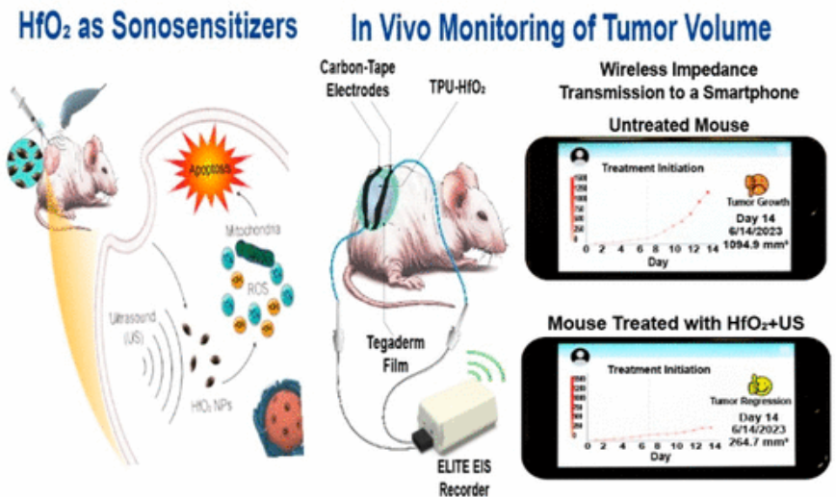A team of researchers and chemical engineers from National Tsing Hua University, in collaboration with Taipei Medical University, has developed a skin patch that could revolutionize tumor growth monitoring just beneath the skin's surface (via Medical Xpress).
Their study, published in the journal ACS Nano, describes a stretchy sticker-like patch that can provide real-time tumor size updates via a smartphone app.
Traditionally, monitoring the growth of tumors beneath the skin required time-consuming procedures such as frequent visits to medical facilities for tests like MRIs.
However, this newly developed skin patch provides a simpler and less invasive alternative, potentially transforming how experts track and treat such tumors.

The Patch's Design
This device employs a film made of thermoplastic polyurethane (TPU) containing hafnium oxide nanoparticles (HfO2 NPs). Acting as a stretchable sensor, the TPU-HfO2 film changes its shape in response to variations in tumor size, altering its electrical properties for continuous monitoring.
In simpler terms, the skin patch is composed of soft, stretchy plastic infused with hafnium, a metal derived from the combination of silver and oxygen. This unique combination allows the patch to conform to the specific characteristics of the tumor.
Crafted into 100-nm nanoparticles, the hafnium embedded in the plastic reacts to changes in alignment and electrical properties when adhered to the skin just above the tumor.
The combination of the TPU-HfO2 film's monitoring capabilities and the cancer-killing potential of HfO2 NPs signifies a significant leap forward in cancer care.
Real-time Monitoring via Smartphone
The key innovation lies in the patch's ability to transmit data to a smartphone app wirelessly. As the patch continuously monitors the size of the tumor, this information is seamlessly delivered to the patient's smartphone, enabling real-time tracking.
Notably, during tests on mice with rice-grain-sized tumors, the patch demonstrated impressive accuracy in tracking tumor size over a seven-day period.
The implications of this technology extend beyond the convenience of real-time monitoring. Should this patch become part of standard treatment regimens, patients would be able to monitor their treatment progress personally.
The data collected by the smartphone app could be sent daily to their healthcare providers, fostering a proactive and collaborative approach to cancer care.
This approach not only enables remote monitoring through telemedicine but also allows medical professionals to intervene promptly based on real-time data. Treatment dosages can be adjusted, and the effectiveness of the treatment can be assessed more accurately.
Future of Cancer Care
The prospect of real-time tumor monitoring and the convenience of smartphone connectivity holds the promise of improving patient outcomes and ushering in a new era of personalized and effective cancer treatment.
Stay posted here at Tech Times.
Related Article : FDA Greenlights DermaSensor: First AI Device for Detecting Skin Cancer

![Apple Watch Series 10 [GPS 42mm]](https://d.techtimes.com/en/full/453899/apple-watch-series-10-gps-42mm.jpg?w=184&h=103&f=9fb3c2ea2db928c663d1d2eadbcb3e52)



